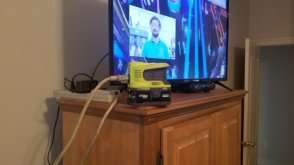Inq720
Odysseus, expert on the Siren's call
I'm doing a small off-grid system for a small sailboat. I want to utilize every amp-hour I can generate and store efficiently. Most things like lighting, marine electronics and even USB charging will be on 12 VDC. For large, temporary loads like an inverter microwave or blender I will be using the GoWISE 1500 watt inverter which maxes out the Overkill BMS and I'll have the remote switch in the boat's galley.
In this thread I want to explore my options for low wattage items that may run for hours. I'm considering things like laptops and LED TV's. I'm thinking a 100-200 watt inverter will cover all these items... even simultaneously. This inverter would also have to be a pure sine wave version. I would keep any outlets segregated from each other.
This thread is similar, but not quite what I'm asking.
In this thread I want to explore my options for low wattage items that may run for hours. I'm considering things like laptops and LED TV's. I'm thinking a 100-200 watt inverter will cover all these items... even simultaneously. This inverter would also have to be a pure sine wave version. I would keep any outlets segregated from each other.
This thread is similar, but not quite what I'm asking.
- First, is there enough efficiency gain by having a second inverter over only using say... 65 watts out of the 1500 watt inverter?
- What parameters (and where can I find them) do I need to quantify the savings on the 1500 watt vs 100-200 watt inverters? Even the manual didn't have any numbers that seemed to shine light on this.
- Do you have any suggestions for good quality 100-200 watt inverters?



